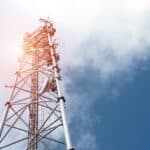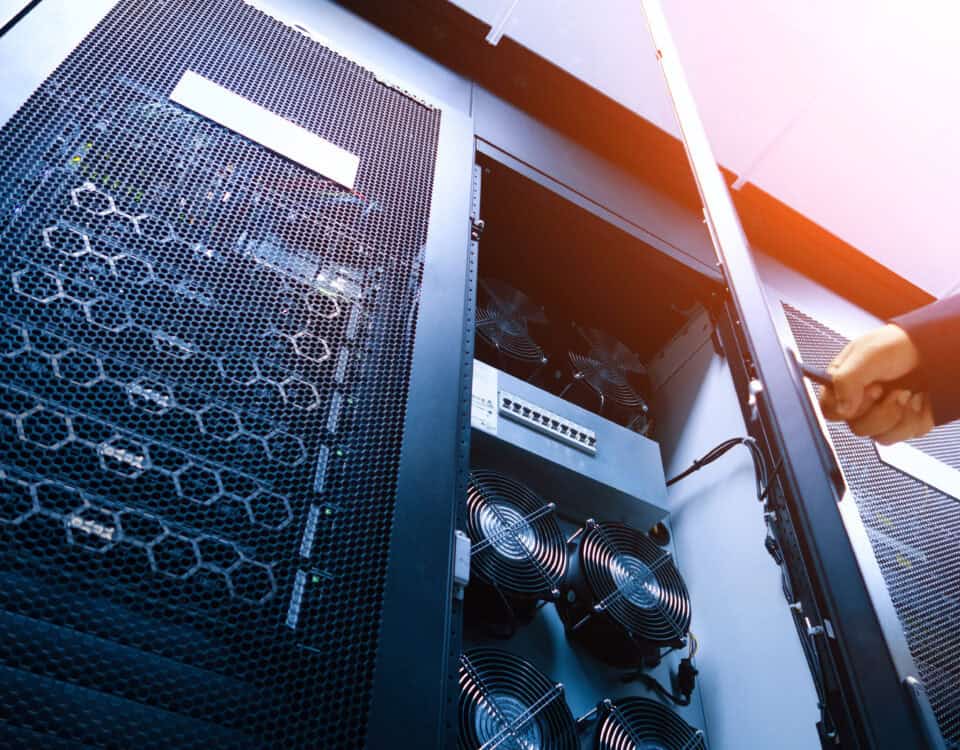
The Mechanics of a Telecom Cooling System
July 18, 2024
5 Factors & Tips for Choosing School Comfort Cooling Systems
July 31, 2024In the ever-expanding digital landscape, data centers serve as the backbone of our interconnected world. As these facilities grow in size and complexity, so does their energy consumption. At the heart of this challenge lies data center cooling — a critical component of data centers’ operation that significantly impacts both operational efficiency and environmental sustainability.
With data center energy consumption increasing, operators must prioritize monitoring their facilities’ Power Usage Effectiveness (PUE) more than ever.
This article explores the significance of this data center energy efficiency metric and the role that cooling systems play in affecting the data center PUE.
PUE Definition
PUE me asures the ratio of total data center energy consumption to the energy used by IT equipment alone. This final figure provides insight into a data center’s overall energy efficiency.
asures the ratio of total data center energy consumption to the energy used by IT equipment alone. This final figure provides insight into a data center’s overall energy efficiency.
And what is considered energy-efficient?
An ideal PUE of 1.0 indicates that all consumed power is used solely by the IT equipment. In practice, however, most data centers achieve a higher PUE of anywhere between 1.2 and 1.8, stemming from suboptimal equipment efficiency, inefficient cooling systems, and power losses in non-IT components.
Interestingly, hyperscalers (large-scale data centers) achieve an impressive average PUE of 1.1 despite their extensive data processing capabilities. This efficiency is attributed to their use of advanced infrastructure and energy-saving technologies, enabling them to operate more economically.
The higher the PUE, the more energy is required to operate the data center, leading to increased environmental impact and energy costs.
The Cooling System’s Impact on the Data Center PUE
Since the PUE calculation encompasses the total energy consumption of a data center, it includes various components such as power for IT equipment, cooling infrastructure, lighting fixtures, security equipment, uninterruptible power supply (UPS) losses, and other non-IT equipment.
Among these factors, cooling stands out as the most significant contributor to overall energy consumption. In fact, cooling systems can account for up to 50% of a data center’s total power usage. Therefore, optimizing the cooling system is crucial for improving (or better put, reducing) PUE rates.
Energy-Consuming Components in Data Center Cooling Systems
Several critical areas within the data center cooling system significantly impact energy consumption and, consequently, increase the data center’s PUE.
Inefficient Cooling Strategies
Inefficient cooling practices can significantly increase energy consumption and PUE in data centers. For example, maintaining uniformly low temperatures across the entire facility wastes energy by overcooling areas that do not need it, regardless of the actual workload. Poor airflow management further exacerbates this issue by failing to direct cool air where it is needed most. Specific issues include improper placement of equipment, which can obstruct airflow and create heat pockets, and inadequate hot/cold aisle separation, allowing warm and cool air to mix and diminish cooling effectiveness. Additionally, suboptimal rack arrangements can create hotspots and uneven cooling, forcing the system to work harder to maintain desired temperatures.
Inadequate Cooling System Maintenance
Neglecting regular maintenance of cooling systems can result in severe energy inefficiencies. For example, clogged filters and dust accumulation can impair airflow and put strain on the system. This not only increases energy consumption but also risks introducing pollutants that can damage data center equipment. Other maintenance issues include refrigerant leaks, which reduce cooling efficiency and require the system to run longer cycles, and worn-out fan bearings, which increase friction and power consumption. Corroded condenser coils can also significantly decrease heat transfer efficiency, causing the cooling system to draw more power to compensate for the reduced cooling capacity.
The Compressors
Compressors, integral to HVAC systems, are major energy consumers in data center cooling. In fact, compressors can account for up to 70% of the total energy consumption in a cooling system. These components compress refrigerant gas, elevating its temperature and pressure before it enters the evaporator. Inefficient or malfunctioning compressors can further exacerbate this issue, consuming more energy to achieve the same cooling effect.
Outdated Cooling Technologies
Legacy cooling systems often lack the energy efficiency of modern alternatives. Older technologies may rely on constant-speed fans and pumps, consuming unnecessary energy during periods of low demand. These outdated systems are typically less effective at regulating temperature and airflow, leading to overcooling or uneven cooling throughout the data center. As a result, they must operate longer and harder to maintain desired conditions, significantly increasing overall energy consumption. This inefficiency directly impacts the data center PUE, making it less energy-efficient and driving up operational costs.
How to Reduce Data Center PUE through Cooling?
As cooling systems significantly impact a data center’s PUE, optimizing these systems presents a prime opportunity to reduce energy consumption and overall PUE levels. Based on the list of energy-consuming sources in data center cooling, here are key strategies data center operators can implement to lower their facilities’ PUE:
Upgrade to Energy-Efficient Cooling Technologies
Transitioning to advanced cooling technologies can significantly reduce your data center PUE. Liquid cooling, for instance, has shown remarkable efficiency gains. One study found that fully implementing liquid cooling can reduce facility power consumption by 18.1% and total data center power by 10.2% compared to traditional air cooling. This method not only decreases cooling energy use but also reduces IT power consumption by alleviating strain on server fans. Evaporative cooling is another effective option, which can be implemented directly or indirectly as part of a data center’s cooling system. For more targeted temperature control, precision air conditioning allows for specific areas to be cooled as needed rather than cooling the entire facility uniformly, leading to substantial energy savings.
AI-Driven Cooling Optimization
The integration of AI and smart sensors is revolutionizing data center cooling efficiency. These advanced systems continuously monitor and analyze various parameters, allowing them to identify demand patterns, detect inefficiencies, and automatically adjust cooling and airflow in real time. This proactive approach and learning capabilities also facilitate streamlined future energy consumption by predicting potential issues and recommending predictive maintenance protocols accordingly. With AI-based functionalities integrated into the cooling infrastructure, data centers can ensure optimal operation both immediately and over the long term, and consistently maintain peak performance. This approach significantly contributes to reducing overall energy consumption and improving PUE.
Upgrade to More Advance Cooling System Infrastructure
Investing in critical components of your cooling systems can lead to substantial improvements in PUE. Upgrading to variable-speed compressors, for example, can significantly lower the Coefficient of Performance (COP), enhancing overall energy efficiency. Modular designs provide flexibility in cooling capacity, adapting to current conditions and optimizing temperature regulation as needed. Additionally, systems equipped with a soft-start mechanism can mitigate power surges during startup, further improving operational efficiency and reducing energy costs. These advancements in cooling infrastructure are instrumental in achieving higher energy efficiency and lowering the data center’s PUE.
Note: While optimizing cooling systems can significantly reduce PUE, it’s crucial to confirm that these energy efficiency improvements don’t compromise the reliability of the data center operations.
Achieving Efficiency and Sustainability in Data Center Operations
Data center operators cannot afford to overlook their facilities’ operation even for a day. Amid this ongoing challenge, keeping an eye on your data center PUE and making sure it is as low as possible is a reassurance that the facility is running smoothly, efficiently, and sustainably.
At AIRSYS, our data center cooling solutions — UniCool Edge™, Optima 2™, and LiquidRack™ — can ensure an impressive PUE as low as 1.03 — an achievement attained by less than 12% of data centers (as of 2021) and surpassing the industry average of 1.55 (as of 2022), as reported by the Uptime Institute.
If you want to achieve such PUE rates for your data center too, contact us online and start benefiting from our commitment to innovation and sustainability.
Sources:
What Is Data Center PUE? Defining Power Usage Effectiveness
Data Center Cooling: Why Does Cooling Have Such a Big Impact on PUE?




